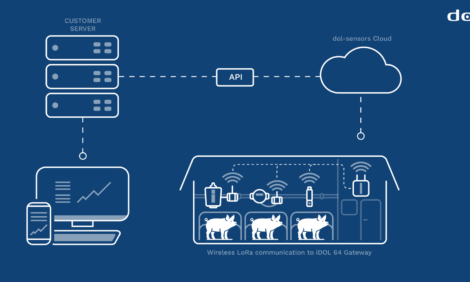



Strategies to Increase Food Safety in Sliced Cured Ham
A study conducted by researchers from the IRTA Food Safety Programme evaluated the effect of biopreservation and high hydrostatic pressure of sliced and vacuum-packed cured ham against Listeria monocytogenes. Research showed that the combination of both antimicrobial obstacles may substantially contribute to the control of micro-organisms in the ready-to-eat (RTE) product.
Listeria monocytogenes is the name of the bacterium responsible for listeriosis, an infection caused by ingestion of contaminated food that originates mainly in RTE products.
Currently, countries like USA, Japan, Canada and Australia apply the ‘zero tolerance’ policy in relation to the presence of L. monocytogenes in RTE products, including those that do not encourage the growth of the pathogen (such as cured ham). In order to meet these health safety demands, the food industry usually applies post-processing treatments for the reduction or disposal of bacteria, or antimicrobial agents to inhibit their growth during the self-life period.
In this context, current trends in treatments to ensure the safe consumption of RTE products are high hydrostatic pressure (HHP) and natural biopreservative bacteriocins, protein substances produced by some microbial strains able to inhibit the growth of certain pathogen bacteria.
Biopreservation or High Hydrostatic Pressure?
One of the most studied bacteriocins is nisin, an antibacterial produced by the micro-organism Lactococcus lactis subsp. lactis and used in dairy and cheese production. Thanks to a broad-spectrum anti-bacterial activity, it can be applied by inoculating the source bacterial culture, by direct attachment to the flesh or by incorporation on the surface of the product, either directly or through the so called ‘active packaging’.
Although the effectiveness of nisin against L. monocytogenes has been proved in fresh meat and cooked or fermented products like sausages and ham, there are few studies regarding cured ham.
For years, the treatment of RTE meat products by high pressure has been internationally reckoned to be a valid post-packaging and listericidal process. This technology allows the cold pasteurisation of the product, helping to preserve organoleptic properties, enhance safety and extend the shelf life of foods, especially of those with heat-sensitive nutritional, sensory or functional characteristics.
Antimicrobial Strategies
IRTA researchers assessed the combined effect of both treatments in cured ham from both white and Iberian pork. The first was submitted to a drying-ripening period shorter than the second, so it was less dry than the Iberian one (0.92 and 0.88 water activity, aw, respectively).
After inoculation with L. monocytogenes, three lots of each type of vacuum-packed sliced ham: without adding bioconservant (control batch) and with the direct incorporation of nisin to the surface of slices and indirectly through films separating slices (active packaging). Half of each sample group was also processed by high-pressure equipment at 600PMA for five minutes.
The control batches, stored under refrigeration (8°C) for two months, confirmed that cured ham does not allow the growth of L. monocytogenes, even when the product is not very dry. However, direct application of nisin to the surface of slices demonstrated a significant bactericidal action, with an immediate reduction in the pathogen count, most important for the drier product. Finally, the use of bacteriocins by packaging also played an active listericidal effect on ham during storage, although it was minor compared to the direct application of the bioconservant, without significant differences regarding the maturity of the product.
HHPs treatment study revealed an immediate reduction in the levels of L. monocytogenes, although the magnitude of the effect was higher in the less cured product. Nisin in the pressurised samples also increased the inactivation of the pathogen, especially in the case of direct application of the bioconservant on the surface of ham. In addition, values obtained after the combined treatment were higher than the amount of inactivation obtained by theoretically adding both their separate inactivation. However, the additional effect was not observed when applying nisin through active packaging, since the inactivation observed was similar to that obtained after HHPs treatment in the control batch.
Research results show that nisin, applied in one or another form is a valid strategy to improve microbial safety of sliced and vacuum packed cured ham, as stated in the US regulations concerning the control of L. monocytogenes in RTE products.
In contrast, HHPs as post-processing anti-Listeria treatment are more effective – both immediately and long-term – than the application of the antimicrobial agent nisin, although the combination of both procedures will help even more significantly to control L. monocytogenes in RTE cured ham.
Reference
Hereu A., Bover-Cid S., Garriga M. and Aymerich T., 2011. High hydrostatic pressure and biopreservation of dry-cured ham to meet the Food Safety Objectives for Listeria monocytogenes. International Journal of Food Microbiology, in press. doi:10.1016/j.ijfoodmicro.2011.02.027
Further Reading
| - | You can view the full report (fee payable) by clicking here. |
June 2011






